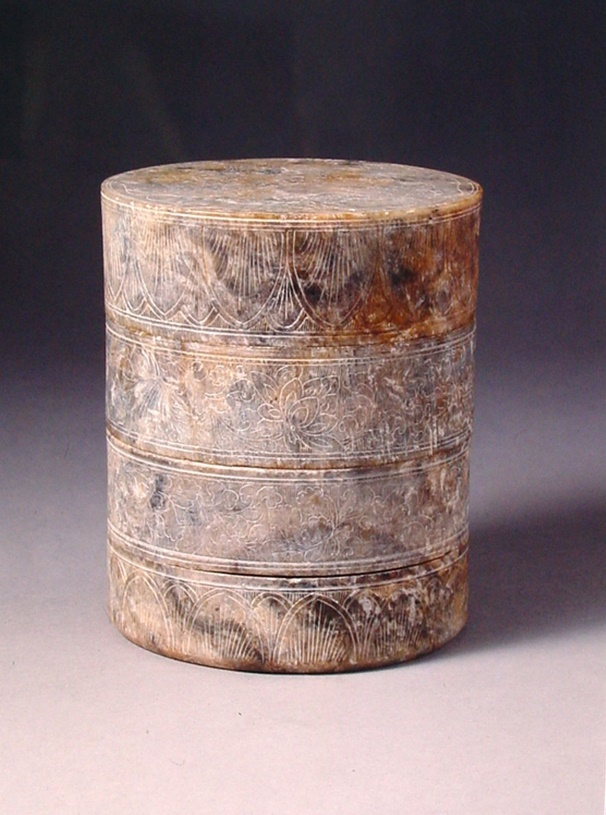Stacking Cosmetic Boxes Incised with Peacocks and Peonies-The Capital Museum

Jin Dynasty (1115–1234)
Height 15.5 cm, diameter 12.8 cm
A stack of four cosmetic boxes are made of Chinese Xiuyan jade (a green jade, named for the occurrence at Xiuyan, Liaoning Province, China) in the shape of a cylinder, with a straight side and a slightly concave interior. There are incised patterns on the surface of the boxes. The first-layer cosmetic box lies on top of the second with the first-layer interface imbedded into the second, and so on down to the bottom box. The round surface of the first-section lid is moulded with a peacock turning its head backwards surrounded by blooming peonies, and its exterior is incised with bow strings and two-tier reversed leaves. The exterior of the second and third sections are incised with bow strings and peonies with broken branches. The bottom-section is flat and incised with double bow strings and upright leaves.
Along with the four make-up boxes, five other round boxes with floral patterns were unearthed. They were all found in the fourth-layer box containing white powder. All the five tiny boxes are the same in shape and slightly different in size and decoration. In terms of shape, the five boxes all have a flattened cover and bottom, and straight sides. The boxes have diameters varying from 4 cm to 4.7 cm and height varying form 1.8 cm to 2.1 cm. In terms of decorative patterns, the surface of the cover is incised with two bow strings and the inner wall with a flower.
This is the first time that cosmetic articles of a definite dynasty were unearthed from an aristocratic Jurchen tomb in Beijing, thus providing valuable materials for studying the lifestyle and customs of women in the Jin Dynasty.
